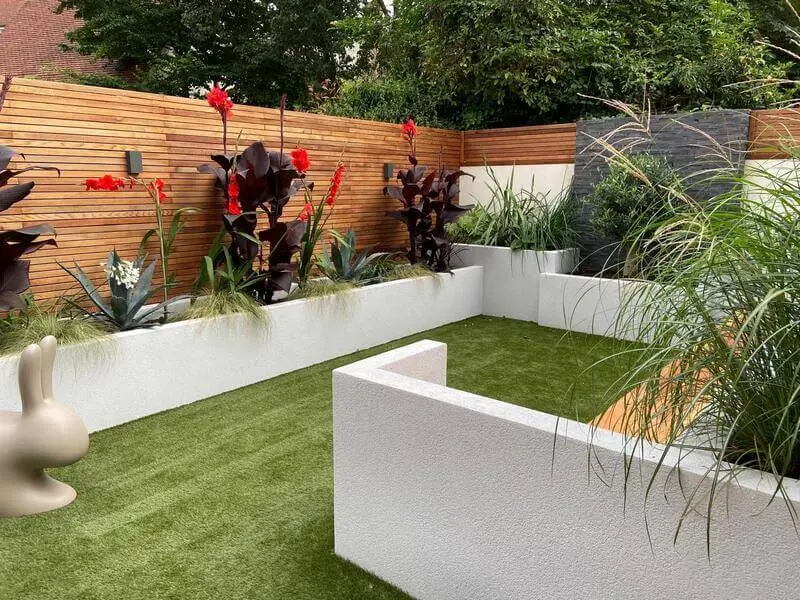Many homeowners look for additional space without the hassle and expense of a house extension. A great alternative is a garden room. Built in your backyard or outdoor space, a garden room is a separate, self-contained space. A garden room is more than a basic shed; you can use it for daily living purposes. It can also be a home office, gym, art studio, playroom, or guest room.
When it comes to creating a garden room, it helps to combine inventive ideas with some practical thinking. This guide covers everything you need to know, from the nuances of garden rooms, advantages, and design ideas with costs, to creating one that works for you.

What is a Garden Room?
A garden room is any structure built in your outdoor space that provides some of the home’s functionalities. Unlike sheds or storage units, garden rooms are designed for comfort and function. Most include windows and doors, insulation, and electricity, making them usable all year round.
They can be simple, like a small office pod, or elaborate, like a multi-purpose guest suite with heating and plumbing. The beauty of garden rooms is that they can be tailored to your exact needs.
Why Pick a Garden Room?
Garden rooms have gained a lot of popularity. Here are the primary benefits:
- Extra Living Space: New functional areas can be added without the need to alter the rest of the house.
- Affordable Alternative – Less costly than obtaining a full house extension or moving to a bigger house.
- Privacy – Perfect for relaxation, work, or hobbies in solitude, away from the activity of the house.
- Flexibility – Serves many purposes, such as a gym, office, art studio, playroom, or extra space for guests.
- Increases Property Value – Quality garden rooms can raise the value of the house.
- Connection to Nature – Mentally restorative to be surrounded by nature.
Step-by-Step Guide: How to Plan a Garden Room
Step 1: Define Its Purpose
Determine the primary reason for obtaining a garden room. The most common purposes include:
- Home office for remote work.
- Gym or yoga studio.
- Kids’ playroom.
- Art, music, or reading hobby area.
- Guest room for visitors.
- Relaxation lounge.
Translating the intended purpose of a room into plans and/or blueprints requires a specific size, value, and elements in design.
Step 2: Pick the Right Location
Pick a part of the garden that offers:
- An Accessible Space: The area is easy to reach from the house.
- A nonsunny or poorly lit space: Natural light adds to the comfort level of any hall.
- Level Ground – Results in savings on foundation construction.
- Private Premises – Secluded from the house’s busy parts and street disturbances.
Pro tip: For maximum tranquillity, position the garden room to overlook trees, plants, and flowers.
Step 3: Decide on Size and Layout
Assess your space requirements.
- Small rooms (2m x 3m): Ideal for home offices.
- Medium rooms (3m x 4m): Suitable for a gym and a hobby space.
- Large rooms (4m x 6m+): Suitable for guest suites and more.
Draw a basic zone layout for the room to arrange furniture and provide space for movement and storage.
Step 4: Choose Materials
Your choice of materials will impact the aesthetics, longevity, and price.
- Timber/Wood – Warm, natural, and eco-friendly.
- Steel or Metal – Modern with strong durability.
- Glass: Bright and airy, but may need extra shades.
- Brick – More costly and less durable.
Eco-minded homeowners will enjoy using reclaimed wood or sustainable materials.
Windows, Doors, and Lighting
Natural lighting makes any room more pleasant, even a garden room. Look into:
- Large sliding or folding glass doors.
- Skylights.
- Windows are wide enough to let the outdoors virtually flow into the room.
Evenings call for multi-layered lighting. Combine bright ceiling lamps and dim wall lamps, and add some task lighting to help the readers or workers.
Insulation and Temperature Control
Proper insulation makes the room suitable for use all year round. Walls must be insulated, doors sealed, and windows double-glazed. This keeps your space warm or cool, depending on the season.

Some buildings store a climate-regulated regulated:
- Portable heaters, underfloor heating.
- Ceiling fans, air conditioning units, and small portable fans.
- Ventilation systems.
Utilities and Technology
A modern garden room can have:
- Electric utilities for lights, fans, and charging stations.
- Wi-Fi for work and streaming.
- Plumbing for a sink or toilet.
Utilities must be planned. This way, your wiring and piping can be hidden in the walls.
Interior Design and Decoration
The room’s purpose must match its interior.
- Office: Desk, a shelf or two, and an ergonomic chair.
- Gym: Mirrors, rubber flooring, and exercise machines.
- Art Studio: Good lighting, easels, and large tables.
- Relaxation Room: Sofas, rugs, and plants.
Keep it bare, but warm with even temperature. Keeping plants placed indoors is helpful.
Rooms Intended For Gardens
Try on these styles:
- Modern Glass Pod – A clean shape with windows from floor to ceiling.
- Rustic Cabin – Comfortable cladding with a warm, inviting middle.
- Eco-Friendly Studio – A use of solar with a green roof and recycled goods.
- Multi-Use Room – Able to change between office, guest space, or even a place to relax.
- Outdoor Bar or Entertainment Room – Great for family, friends, and even large gatherings.
Problems Encountered with Garden Rooms
Garden rooms are useful, but here are some issues:
- In some places of the world, Planning Permission might be a must.
- There is a possibility of budget holes because of the high needed features.
- For smaller gardens, there is a possibility of space problems.
- With Wood or Glass outer sides, there is a possibility of maintenance problems.
Most of the time, these problems are manageable with proper planning and professional guidance.
FAQs
Do I need planning permission to build a garden room?
Depending on your area, small garden rooms might not need permission for building, but always check local building rules.
Can I live in a garden room permanently?
As of now, a garden room is used for the day. To live in one for the time, permission may be needed. You will also need additional facilities.
How long does it take to build a garden room?
Smaller builds take 2–3 weeks, while larger rooms may take 1–2 months.
Does a garden room add value to my property?
Yes, a well-built garden room can raise property value by 5–10%.
Can I use a garden room in winter?
Yes, with proper insulation and heating, it can be comfortable year-round.
Final Thoughts
A garden room is one of the most practical ways to expand your living space. Whether you need a private office, a home gym, or a relaxing retreat, it can be designed to suit your lifestyle and budget.
The key steps are defining the purpose, selecting the right location, planning size and materials, and ensuring proper insulation and utilities. Once complete, a garden room will not only give you extra space but also increase your property’s value and quality of life.
Investing in a garden room means investing in comfort, functionality, and long-term benefits for your home.
